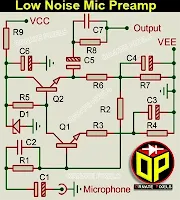SM4151 IC schematic circuit diagram datasheet and Pinout. This IC is used for all power management of LCD panels, in which DC-to-DC converter and level shifter circuits are integrated.
This IC does not have pins; it has 48 terminals in the QFN package. Moreover, the SM4151 IC has a metal pad at the bottom, which is connected to the ground and acts as a heat sink.
SM4151 IC Schematic Circuit Diagram
The circuit diagram of the SM4151 IC is published below; from pin (terminal) 30 to pin 36 of the IC, six CKV, and STV are output from these six pins.
Moreover, the SM4151 IC has three voltage boost converters, from which the AVDD, VON, and HVDD boost voltages are output, and the VSS and VOFF voltages are output from the buck converters belonging to this IC.
The LCD panel of Sony Bravia Smart TV is installed with SM4151 IC, which is used in DC-to-DC converter and logic level shifter circuits.
The operating voltage of the SM4151 IC ranges from 9.5 volts to 14 volts. Because this IC can be damaged if a short circuit occurs in the LCD panel, it has a system of short circuit protection, overload protection, and thermal protection.
SM4151 IC Circuit Diagram
 |
| SM4151 IC Schematic Circuit Diagram & Pinout Data |
Output and Input Voltages of SM4151 IC Circuit
VIN +12 Volts, VLOGIC (VCC) +3.3 Volts, AVDD +15 Volts, VON +28 Volts, VSS-6.5 Volts, VOFF -12 Volts. VCOM +7 Volts, CVO +7 Volts.
SM4151 IC Equivalent or Substitution
I noticed no difference between the circuit diagram of SM4151 IC and RT6906B IC; the operating voltage and output voltage of both ICs are the same.
Moreover, the pin configuration and package type of SM4151 IC and RT6906 IC are the same. So, RT6906 IC is the substitute or equivalent of SM4151 IC.
SM4151 IC Datasheet Pinout PDF
The SM4151 IC datasheet and pinout are not published on this page in PDF format, but the circuit diagram of the SM4151 IC above shows the pinout data and pin configuration.








